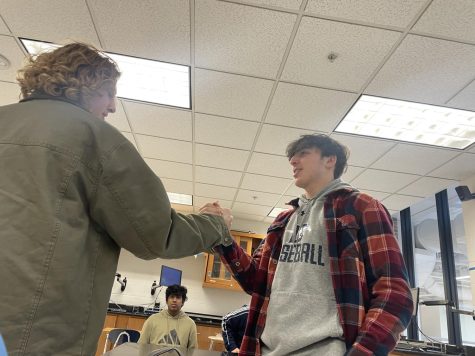STEM classes need female diversification
STEM classes with a high ratio of any gender compared to another can be isolating and scary.
December 2, 2022
According to the US Census, women in science, technology, engineering and mathematics (STEM) careers is 27% while the overall percentage of women in the workforce is nearly half. This trend of the male dominated field transfers over to DGS’s STEM classes.
Junior Grace Rerucha notices the evident ratio in her Physics 400 class.
“I sit with all boys in my Physics group. It is hard sometimes to relate to them or be left out of conversations. I am friends with boys, but in class I want to feel valued and smart too,” Rerucha said.
The low female to male ratio especially in higher level STEM classes was observed and mentioned by 9 out of 10 females when asked. Many initiatives have been made around the country to advocate for and encourage young females to join STEM related careers or take those classes, but the ratio at South shows these programs need more support.
Gender discrimination, while not prominent at South, is a big deal in jobs with a high male to female ratio. Females in classes with a large volume of males may feel a lesser, unspoken form of inequality.The lack of encouragement from staff can result in struggles for females going into STEM careers in the future.

“In my AP Physics class I think the boys feel like they are smarter than me. There are only 5 other girls along with me,” Senior Kira Bloomfeild said.
To prevent inequality, whether it is discrimination that is spoken or felt by the person, South should implore to support girls in STEM and push female students to take higher level courses and encourage diversity.
“I am in a lot of high level courses and feel like I can do just as well, but for some reason, because I am female I think that I am looked at differently,” Bloomfield said.
Encouraging diversity in high level STEM courses will educate students as well as the community, which benefits everyone.
Some AP science classes like Biology and Chemistry are taught by females Jennifer Fischer and Jennifer Wolf, but the ratio in their classes doesn’t represent the ratio of the AP science teachers.
Argonne National Laboratories has the Women in Science and Technology (WIST) program which was created in 1990 to diversify the lab and facility.
Argonne also hosts the Introduce a Girl to Engineering program where they invite 8th graders to shadow a scientist and get hands-on experience as well as advice from all genders in STEM careers.
Argonne is located in Lemont making South a great example of a school that can benefit from their resources. Their most relevant event is a conference for high school females looking into STEM careers. A minimum of 5 posters around school informing students about these diversifying events or advanced STEM classes they can take will boost the diversity of classes.
South should do more to further the diversity in higher level STEM classes, and promote equal gender classes.




